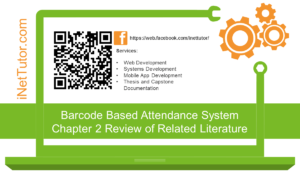Online Grading System with Grade Viewing Capstone Project
CHAPTER 1
Grading System with Grade Viewing
Introduction and Project description
People nowadays are living in information age reliant on digital information. Digital information is an electronic information; the result of computer processing. Every type of job relies upon getting data, using it, managing it and relaying information to others. Computers enable the efficient processing and storage information.
The logistical problems associated with distributing, collecting, grading, and the difficulties in ensuring fairness and consistency in grading tend to increase non-linearly with the number of students. Electronic Grading System is designed to provide incentive for achievement and assist in identifying problem areas of student of name of school. Students’ grades are vital information needed in advancing to the next grade/year level and its accuracy is very important.
Online Grade viewing helps the students of name of school to view their grades using their username and password to access or login to the online application. Many public and private School are adopting continuous improvements program to improve operational work. Furthermore, it is not easy for a teacher to manage hundreds of records in an accurate way without using automation. It is necessary that students should have grades at the end of the semester.
Objectives
General Objectives
This study aims to improve the manual submission of grades to the Registrar’s office of name of school by developing and designing Grading System with Grade Viewing that will be secured and reliable in keeping the records.
Specific Objectives
Specifically the study aims to:
- To convert the manual process into online based application
- To provide computerized record keeping of grades for name of school.
- Provide an automated system that will let the students easily access their grades online.
Statement of the problem
name of school is currently using the manual process to inform the students of their grades which is time consuming. Manual process of retrieving and releasing of records is very slow. Security and organization of records is also a problem in the manual process of operation and lastly the faculty and students are forced or required to visit the registrar’s office to submit and request for grades which entails transportation expense to both the faculty members and the students as well.
With the aforementioned problem, the researchers will propose to design and develop an information system that will address those issues and concerns, thus the Grading System with Grade Viewing will be a very big help to the institution.
Significance of the study
This study aims to help the process of submitting grades in the Registrar’s Office and improve the system to provide fast and easy ways for the students and teachers of name of school to manage the student grades.
This study is significant to the following:
Students. With the grade viewing feature of the study, the students can now view their grades online.
Professors. Professors would be able to record and compute for the grades of their students faster thereby lessening their workload.
School Administrator. School Administrators no longer have to re-compute the grades of each student to check on their accuracy. Reports such as grading sheets and class records can be submitted on time.
Future Researcher. This Online Grading and Grade Viewing System may serve as a reference for the future researchers for the improvement of the system in the near future. This study will serve as training for the proponents, to enhance their skills in web development.
Conceptual framework

Input Process Output Model (IPO Model)
Figure 2.0 IPO Model of Electronic Grading System for name of school
Project scope
Scope The system will cover the following:
- Register all the important information needed as follows:
- Student Information
- User Account Information
- Faculty Information
- Allow students to view grade online
- Generate reports as list of students, grade sheet
- Computerize data processing such as:
- Computation and submission of grades including prelim, midterm and final.
- Import and export grade sheet in excel file format.
CHAPTER 2
Review of the Related Literature
Review of related literature and Studies Related Literature and Studies guide the researcher in making comparison between his findings with the findings of other researchers on similar studies with the end in view of formulating generalizations or principles which are the contributions of the study to the fund of knowledge. As internet my main source, I’ve gained sufficient information of what my system would be. The following were the theories and studies behind the concept of the system.
Related Theories
Student Training
Grade Book, Viewing Grades, Notes, Graphing Tools
In this Turning grade book, it allows the instructor to enter and calculate grades for students on assignments submitted to the instructor. Their “my grades” tab appears on the class portfolio page when the product is available. The grade book can be used to track numeric grades, attendance, and notes as well as allowing students to graph their performance. To view any grades and attendance records or instructor notes visible in a specific class, they’ll open class portfolio page and click on the “my grades” tab. in the part of viewing grades, a student user’s grade page will show the papers and reviews the student has submitted along with any grades that have been given by the instructor on these submissions. The number in the point’s column shows the total number of points an assignment is worth. The number placed to the left of the points column shows how many points the student received for their assignment. The grade value for the submission appears in the grade column.
Grades only become available on the post date of an assignment. The top of the grades page shows the overall class grade and the attendance. The instructor can enter a note alongside a grade for a submission. If the instructor has entered a note for the submission a “note” icon will appear next to the grade under the note column. Click on the “note” icon to view the instructor note. The full list of notes given to the student in a class can be viewed by clicking on the “notes” icon next to the grade summary at the top of the grade book window. The graphing tools allow a student to view their own performance and the class average performance in line graph or pie chart formats.
The graphing tools are accessed by clicking on the “graphs” button in grade book. On the graphs page, the student will use the “show” pull down menu to select the graph type to view. Online grading allows faculty and departments to submit grades from anywhere with an Internet connection. Grade rosters display up-to-date enrolment information, e.g., late adds and “W” grades.
Related Studies
In this research entitled “Online Grade encoding and inquiring System via SMS technology” by: Bella Bhe The San Mateo Municipal College has increased in student’s population at the same time the number of works of the registrar and student’s grades to be processed has also increased. San Mateo Municipal College wants to give a good education to everyone who does not afford to enroll in other universities that have high tuition fees. They always secure the best way to make their students comfortable with their school. One of the responsibilities of the registrar office is to keep the student’s grades data secured for their records and purpose.
The researcher stated that the general problem faced by the SMMC is the manual encoding, submission and distribution of student`s grades of San Mateo Municipal College. The specific problems are the time consuming, costly and long process of inquiry of grades, the students need to go directly to their respective registrar in order to inquire their grade, the Instructors are encountering errors during encoding of grades and the Instructors need to go to the registrar just to encode the grades. After knowing these problems, the researchers aim to develop an Online Grade Encoding and Inquiry System via SMS Technology for San Mateo Municipal College and specifically To develop a system that will lessen the registrar`s tasks in encoding of grades, to develop a system that can able to send grades automatically, to develop a system that will shorten the process of inquiry of grades, to develop a system that can able the instructor to encode grades online and to develop a system that can inquire grades via SMS. In this study, the researcher used descriptive method of research; he used questionnaires and also conducted interviews to gather data.
Synthesis
Grades or marks enable students to evaluate themselves and choose the subjects they are good at. The Grading System with Grade Viewing gives attention in grade transparency which enables the students to know and get aware of their academic performance and evaluate themselves unto what subject they are good at.
Our study on Grading System with Grade Viewing focuses on the monitoring and management of student’s grade and promotes transparency to give answer to the students’ doubts with regards to their grades. The development of a system that will monitor the students’ grades of the students in name of school is expected to contribute to the development of the school’s information system. The awareness of the students to their grades will serve as a reliable reference to them to improve their studies to attain high grades. The existing studies as stated in the above literature’s prove that monitoring student’s performances contributes to the student’s education.
CHAPTER 3
Methodology
This chapter presents the system development method employed by the researchers in conducting the study, the discussion in regards for the Software development procedures.
SDLC
The researchers will use Rapid Application Development methodology in the development of proposed system. Figure 1.0 presents the Rapid Application Development methodology. The developments of the system were time boxed, delivered and then assembled into a working prototype.
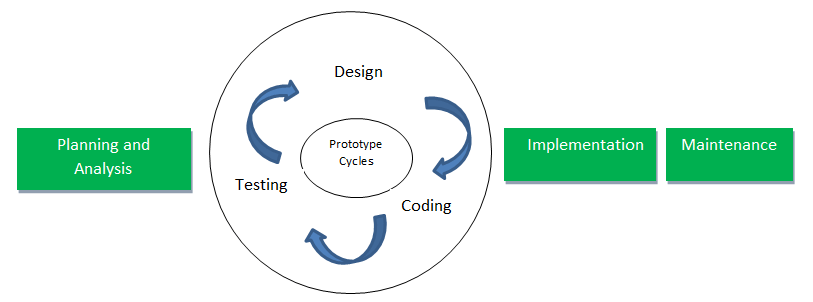
Figure 1.0 The Rapid Application Development of Grading System for Name of school
Figure 1.0 shows the different phases in Rapid Application Development. Requirement capture phase includes planning analysis phase. The quick design phase consist of logical and the physical design phase.
Planning and Analysis
Planning and analysis phase determined based on the type of architecture that the system is designed. The End-users suggestions are also being considered for the better outcome and usability of the proposed system
In this phase, the researchers will conduct an interview and survey to the target beneficiary of the system. In conducting a research interview and survey, the researchers provide tool such as questionnaire. Then followed by gathering data to identify the desired and needed features to be included in the proposed system. After gathering data, the researchers analyse the possible problem based on the needs and requirements of the user.
System Design
After all the Planning and analysis were met, the system design will take place. The researcher will make sure that the Overall design and User Interface (UI) as prescribed by the End-user are met. This part covers the physical and logical design of the developed system. The screen layout of the proposed system will show in this page. The data design and the architectural design of the system will also be viewed in this page.
The data design contains the Entity-Relation Diagram (ERD) and the data dictionary. The ERD is a database design tool that provides graphical representation of database table, the columns in table and the relationship between tables. A data dictionary is a collection of description of the data object or items in a data model for the benefit of programmer and others who need to refer them.
Coding
The proposed system will be constructed during this phase. The researchers evaluated the system design and the data gathered during the data gathering stage. With these data, the researcher made sure that the application met all the criteria as stated in the objectives of the study.
The researchers will use Visual Basic as the programming language and MariaDB/MySQL for the backend or the database of the project.
Testing phase
Expert Testing
In this phase, we will perform series of testing to check for any possible problems that may occur during implementation and operation of the software and if the specification has been met. We will use McCall’s Software Quality Model Standard as our Measuring tool in the expert testing which was evaluated by three (3) IT Experts, to check the system’s reliability.
User Acceptance Testing
The researcher prepares the system for final testing. The researcher once again let the users explore and test the system. After the test is done, again the researcher distribute questionnaire to the users to rate the system. For user acceptance testing, we will provide a system evaluation questionnaire for our respondents. The questionnaire will be validated by three (3) Experts.
Implementation
During this phase, the system will be installed in the IT/ICT office of the college. Proper implementation procedure should be imposed to ensure system operability.
Implementation Plan
The requirements for the proposed Electronic Grading System for Name of school IT:
- Software Requirements
- Operating system (OS). Windows 7, 8, 10
- PHP, Apache Web Server
- MariaDB/MySQL Server
- People Requirements
- Staff/Personnel- They are the people who are in charge in record keeping. They must learn how to use the system since they are the ones assigned for encoding and retrieving data as well as the reports needed.
Maintenance
During the maintenance phase, errors or defects may exist, which would require repairs during additional testing of the software. Monitoring the performance of the software is also included during the maintenance phase.
CHAPTER 4
This chapter includes the Data flow diagram, ERD and Database design of Grading System with Grade Viewing
Object Modelling
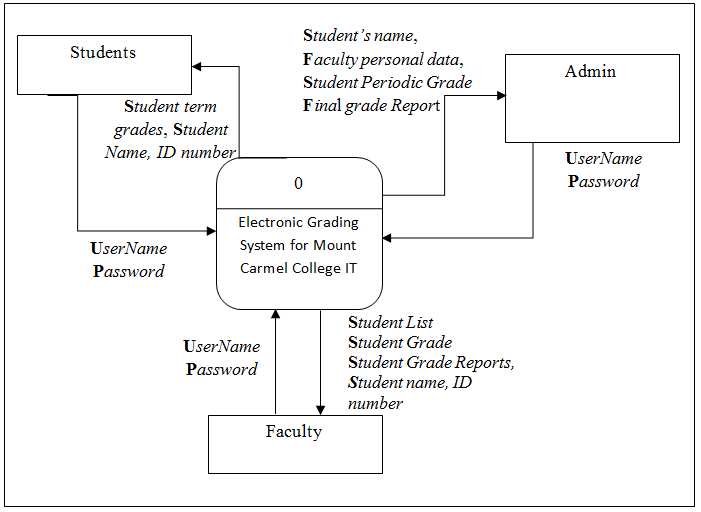
Figure 2.0
Context Diagram of the Proposed System
Figure 2.0 above illustrates the users input to the system and the output information to the users. The system administrators will set the Students’ and Faculty Information, Subject info, Faculty subject assignments, Student subject enrolled, school year, section, year level, and grade criteria. The faculty will then give students term grades and grade updates. The students can only view their respective grades given by the faculty.
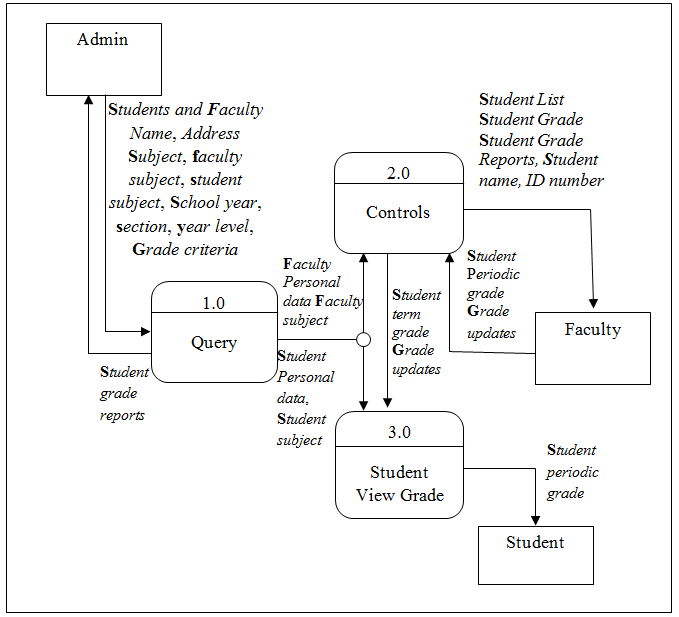
Figure 3.0
Level 1 DFD Explosion of the Proposed System
Figure 3.0 shows the process on how user can access the system. The proposed system is composed of three (3) namely: main process, query (1.0), Controls (2.0) and the student View Grade (3.0). The system administrator will first set the faculty info, faculty subject assignments, and student information and students’ subject enrolled. The faculty will then input or encode the student term subject grades in faculty controls (2.0) and the students will view their grades in Student View Grade (3.0). In case of grade complains, the student must inform his/her respective faculty, the faculty will then let the administrator know and present valid information and comply necessary requirements and procedures regarding the complaint. The system administrator will then edit the grade of the respective student, if the information presented by the faculty was valid and legally confirmed.
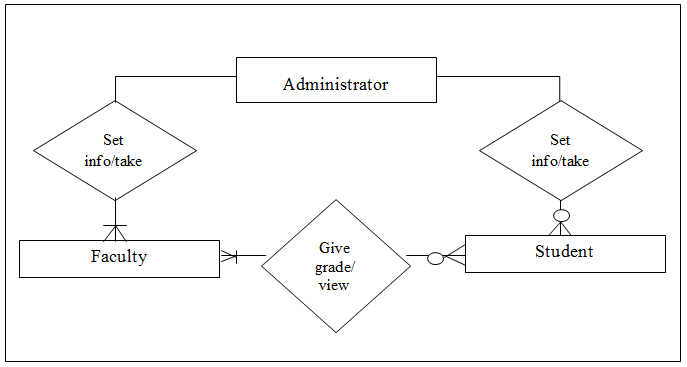
Figure 4.0
Entity Relationship Diagram of the Proposed System
Figure 4.0 in page 22 illustrates the ERD of the Electronic Grading System for Mount Carmel College IT. In relation, the administrator sets the faculty and student information. The faculty and student take the information set by the administrator in response. The Faculty will then be the one responsible in giving the students’ grades. The student will then view the grades given by the faculty.

